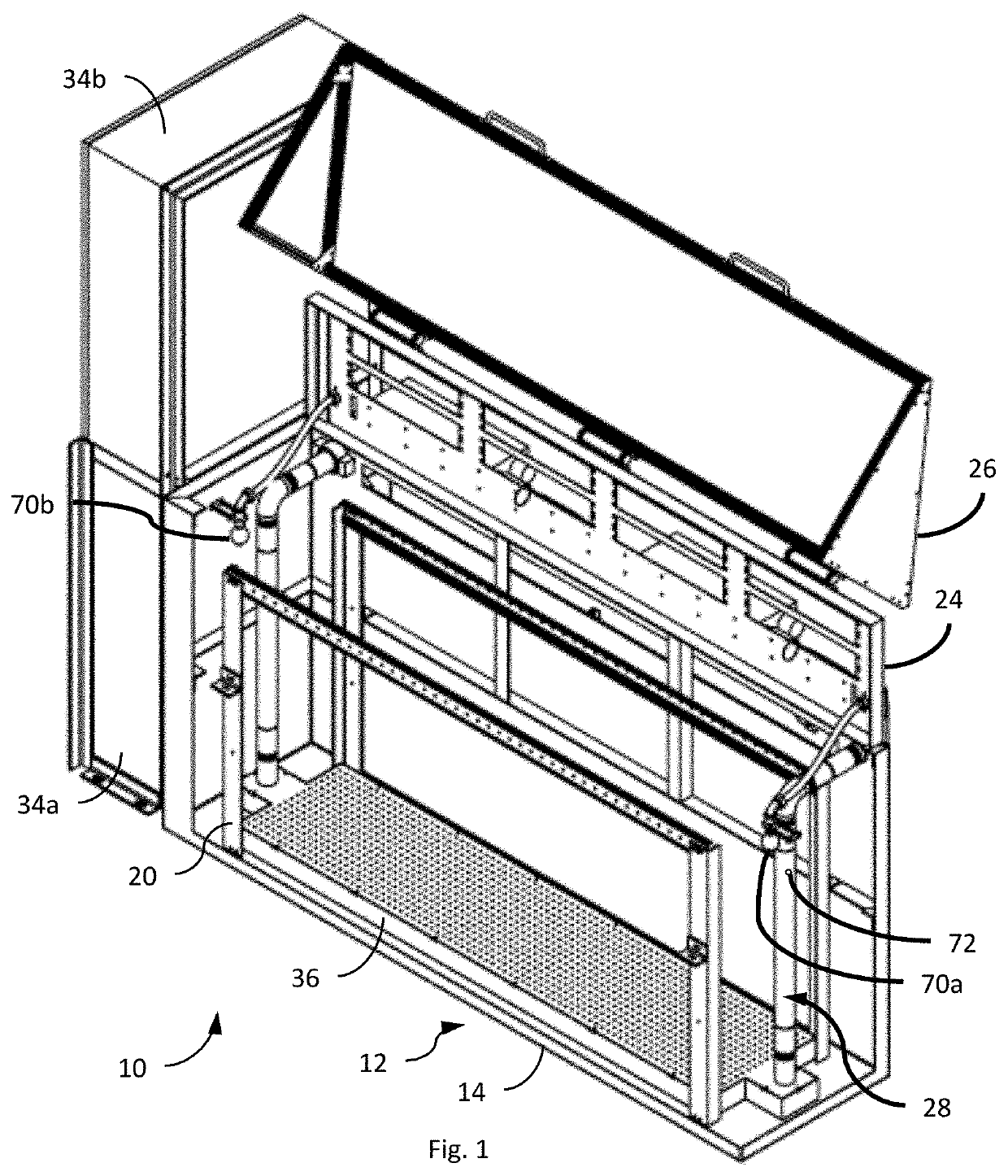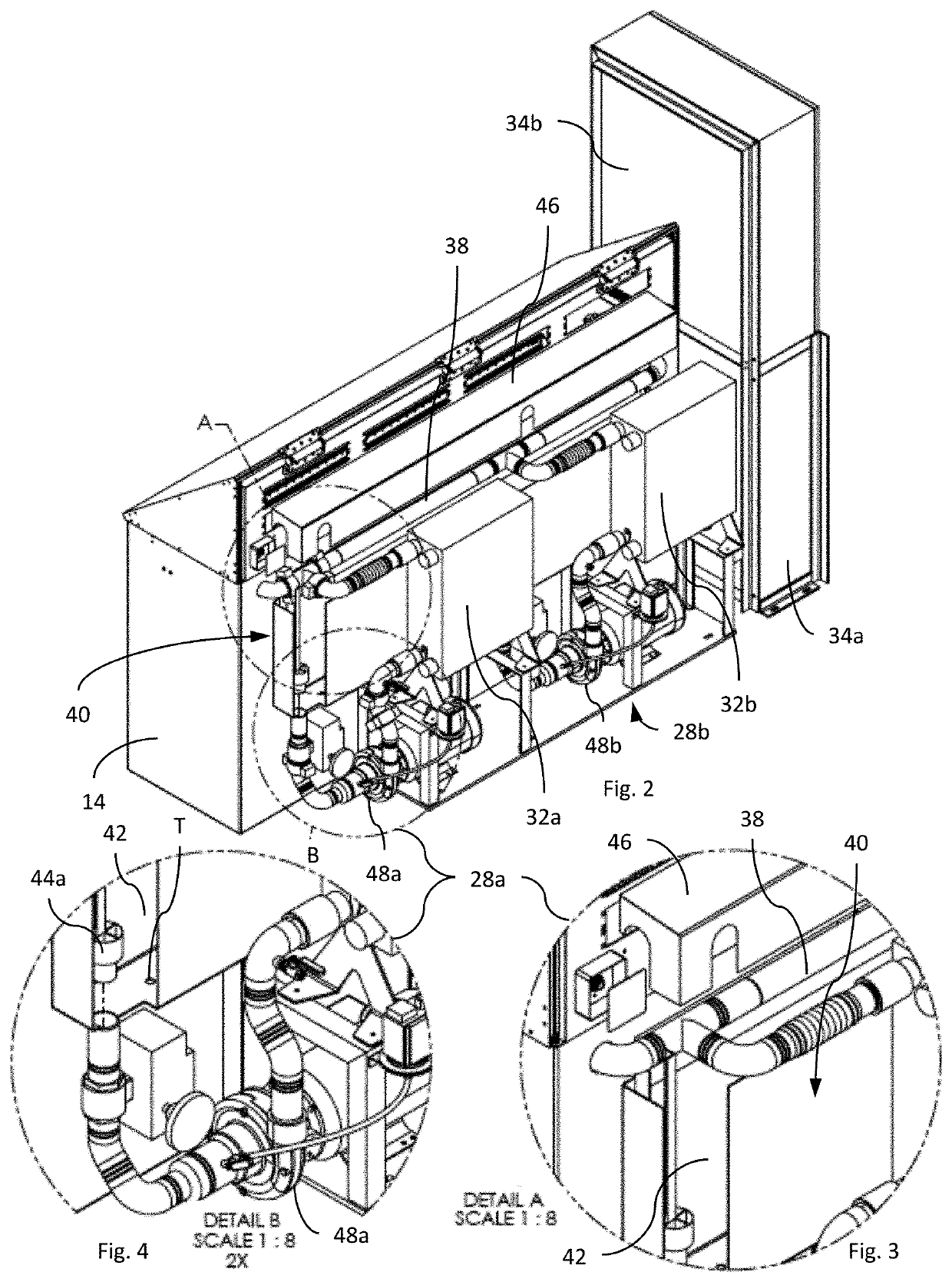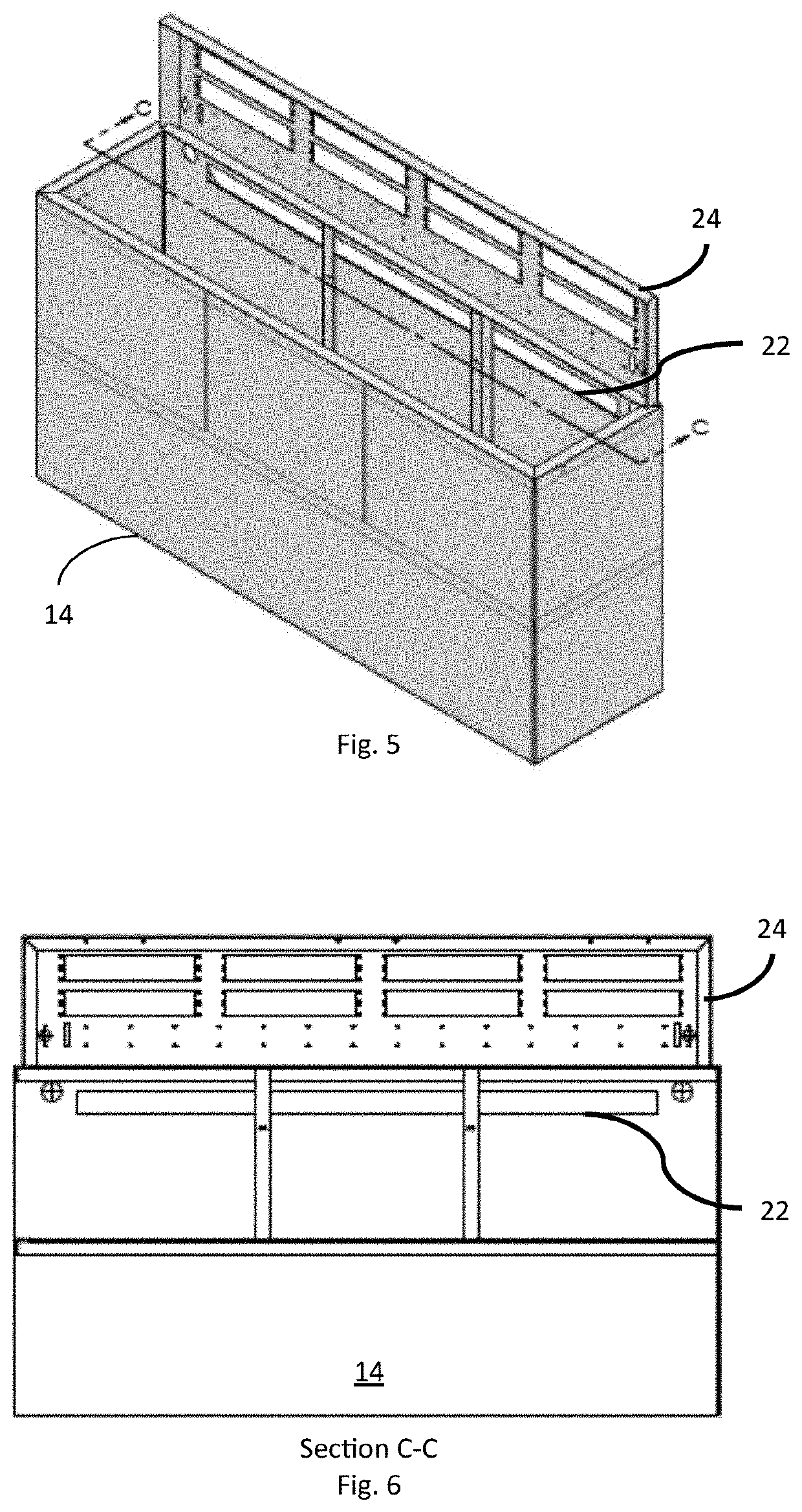Appliance Immersion Cooling System
a technology of immersion cooling and cooling fluid, which is applied in the direction of electrical equipment, electrical apparatus, electrical apparatus contruction details, etc., can solve the problems of insufficient draining of cooling fluid, inherently limited operating capabilities, and the nature and cost of the chosen cooling fluid, fluorocarbon liquid, etc., to avoid unnecessary proliferation of numbers
- Summary
- Abstract
- Description
- Claims
- Application Information
AI Technical Summary
Benefits of technology
Problems solved by technology
Method used
Image
Examples
Embodiment Construction
[0028]Shown in FIG. 1 (front view) and FIG. 2 (rear view) is a tank module 10 adapted for use in an appliance immersion cooling system constructed in accordance with a preferred embodiment of our invention. For convenience of reference, we have illustrated in FIG. 1 the tank facility 12 of the immersion module 10 in partial cut-away to emphasize several important internal facilities; we have shown the tank facility 12 in isolation in FIG. 5. In general, the tank facility 12 comprises: a tank 14 adapted to immerse in a dielectric fluid a plurality of electrical appliances 16, e.g., contemporary computer servers (see, e.g., FIG. 11), each in a respective appliance slot 18a distributed vertically along, and extending transverse to, a long axis of the tank 14 (see, generally, FIG. 10); an appliance rack facility 20 of convention design adapted to suspend the appliances 16 (see, e.g., FIG. 11) in respective appliance slots 18 (see, FIG. 10); a weir 22 (best seen in isolation in FIG. 5 an...
PUM
 Login to View More
Login to View More Abstract
Description
Claims
Application Information
 Login to View More
Login to View More - R&D
- Intellectual Property
- Life Sciences
- Materials
- Tech Scout
- Unparalleled Data Quality
- Higher Quality Content
- 60% Fewer Hallucinations
Browse by: Latest US Patents, China's latest patents, Technical Efficacy Thesaurus, Application Domain, Technology Topic, Popular Technical Reports.
© 2025 PatSnap. All rights reserved.Legal|Privacy policy|Modern Slavery Act Transparency Statement|Sitemap|About US| Contact US: help@patsnap.com



